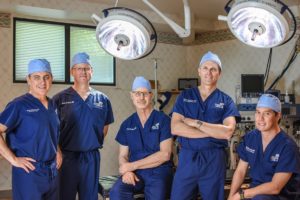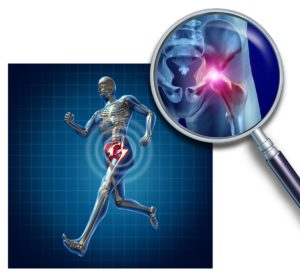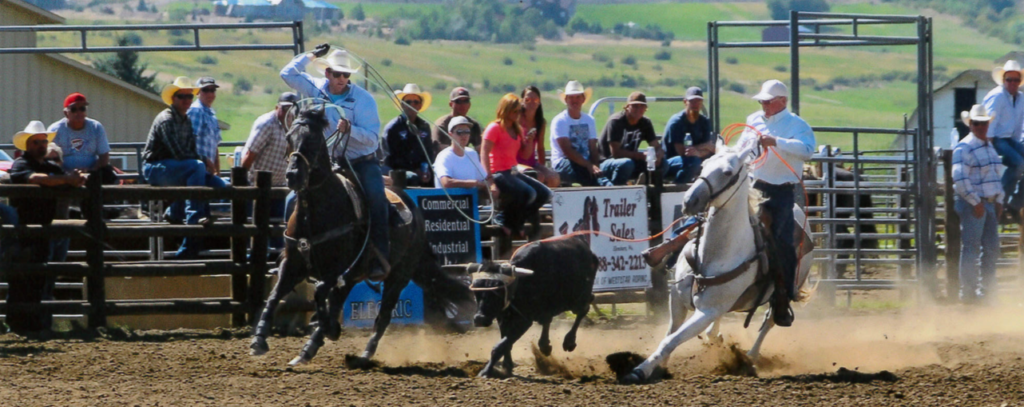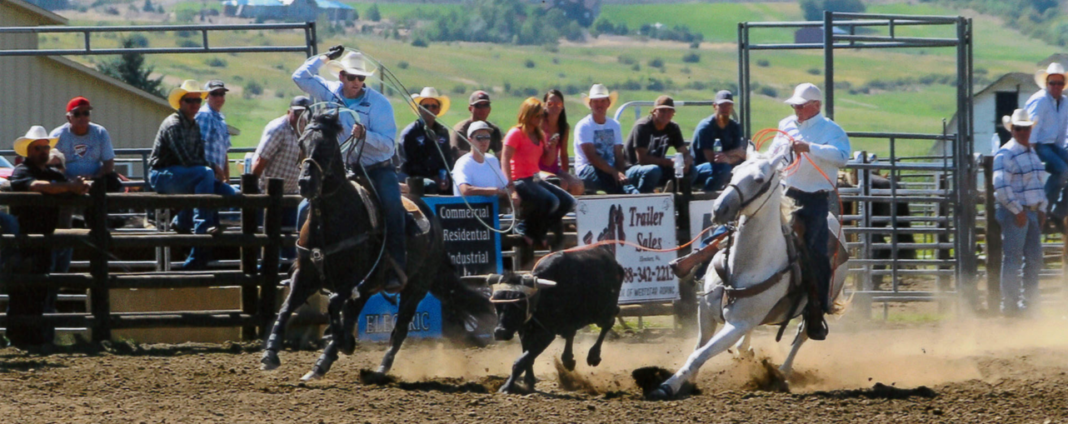Millions of Americans live with total hip replacements. It’s fairly common in people over the age of 60 and, while uncommon, people as young as 45 sometimes need hip replacement surgery, too. A total hip replacement can allow a person to get back to a more active lifestyle. And, while the result should be better quality of life, post-surgery recovery from a traditional posterior total hip replacement can be lengthy. This is why Gary Hockett, a competitive team roper, elected to have Washington Orthopaedic Center surgeon Dr. Scott Slattery perform a direct anterior total hip replacement. He’d heard this approach would get him back in the saddle quickly.

For Hockett, who turns 71 this August, it was just part of getting older. Wear and tear on the joint where his femur connects to his hip started to cause pain and lack of mobility. “Last fall it got to the point where I could hardly walk,” Hockett says. “I bought an electric wheelchair just so I could take care of my animals. Then a friend of my mine who is a surgical nurse at Providence set me up with Dr. Slattery.”
Dr. Slattery says that for most people, age is the culprit, causing degenerative arthritis from normal use. However, some people do have old injuries or body imperfections – such as a deformed ball on the femur – that causes them to have trouble earlier in their life than the average person.
Why Anterior is Better for Most
Traditionally, doctors use the posterior method for hip replacement, where they enter they enter along the backside of your hip. This method (and other methods that are used as well) require the doctors to partially detach the muscles from the tendons that attach to the hip. This makes the post-surgery recovery painful and lengthy. It can also leave the patient with weakness.

The anterior approach goes in from the front in such a way that the surgeon does not need to cut through any muscle. Slattery says the method has been around for decades, but it’s only been in the last ten years that it has started to gain popularity. “It’s not what older doctors were taught in school, so it’s still not seen that often,” he adds. “Plus, it requires some more technically advanced equipment that wasn’t available before.” Along with avoiding detachment of the muscle to accomplish the replacement, the anterior surgery has a smaller incision site, which some people may prefer for cosmetic reasons.
The anterior surgical method takes more expertise on the part of the doctor as access is less direct than the posterior method. But, for the patient, the pros far outweigh the difficulty of the surgery. “Research is showing that patients are up and moving faster, have less pain after surgery, more strength and less restrictions on activities directly after surgery because you aren’t waiting for the muscles to repair,” Slattery explains.
When Slattery told Hockett he was going to need a hip replacement, he gave him the choice on the method he would use. Hockett didn’t want to just relieve the pain he was experiencing, he wanted to get back on is horse and continuing doing the sport he loves. And do it quickly. “I had two friends who had hip replacements using the posterior method and while they didn’t have complications, their healing time was so long,” says Hockett. “One of them had surgery completed in January of this year and he is still limping around. And, he is twenty years younger than me.”

So, on February, 28 2017, Hockett had an anterior total hip replacement. That same afternoon, Hockett was up and walking around with the help of a walker. He says that after just nine days, he no longer needed any pain medication and was not using a walker or a cane. Within six weeks, he was riding and roping again.
“It was just so much faster than what my friends’ experience,” Hockett said. “I had my shoulder repaired five years ago and my right hip just now and they are the only good parts left on me! The rest of this stuff is 70 years old and getting worn out.”
Hockett is now back to competing and will be going to half a dozen team roping competitions this summer with his new hip.
Do You Need Surgery?
Often people have pain in what they think is their hip and, upon investigation, ends up being their back or even pelvis. However any type of pain should be checked out by a doctor who can perform x-rays and find out what is going on. The one thing you shouldn’t do is continue taking over-the-counter pain medication and ignoring the symptoms. The longer a problem persists, the worse it will get.

We all know a body in motion stays in motion. It’s good for us, regardless of age, to stay active and that is hard to do with chronic pain. Slattery says the whole point of any hip replacement surgery is to allow people to get moving again without pain.
He adds that not everyone is a good candidate for the anterior method, but it’s something to discuss with your doctor to find out if it’s a good option for you.
To find out more about anterior hip replacement options, contact Dr. Scott Slattery through the Washington Orthopaedic Center website or by calling 360-754-2454.
Sponsored




















































